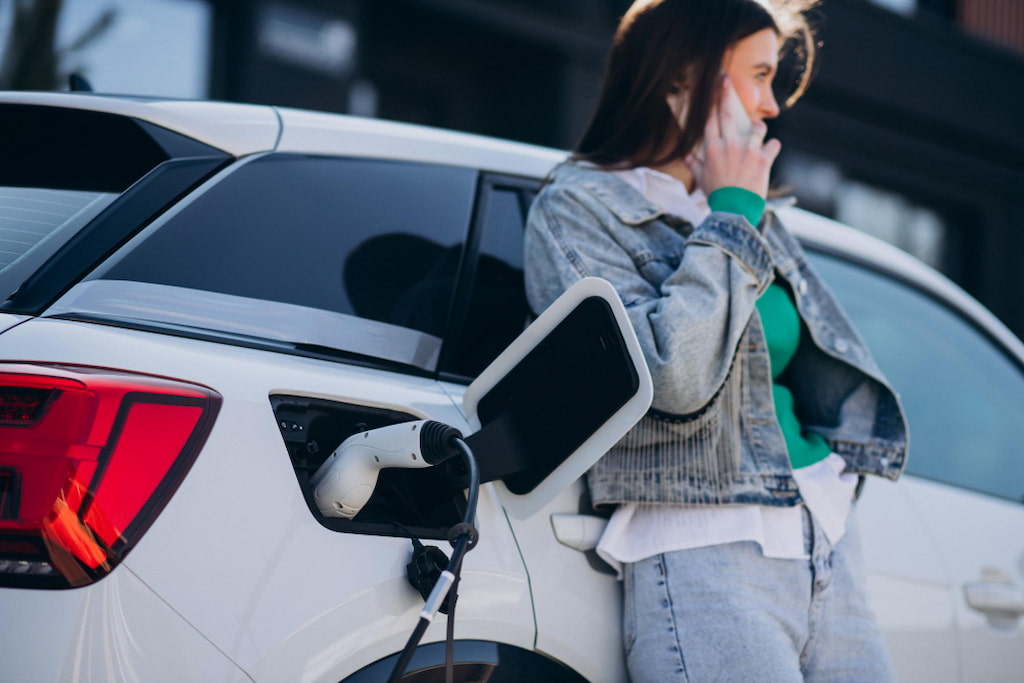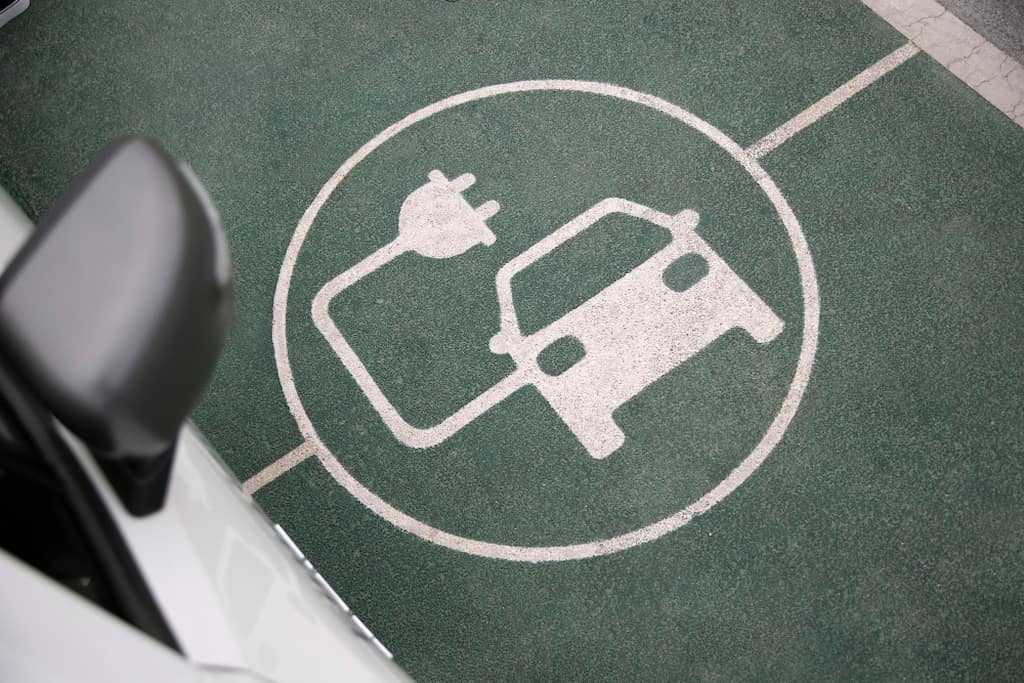
The growing adoption of electric mobility drives the search for efficient and sustainable energy solutions with questions such as "how many solar panels do I need to charge an electric car." Among them, charging electric vehicles using photovoltaic solar energy emerges as a prominent option. However, determining the optimal number of solar panels for this purpose presents a series of variables that must be analyzed with precision. This Activacar article, as a company specializing in charging point installation, thoroughly addresses the critical factors and calculation methods for establishing the number of solar panels needed to charge an electric vehicle, providing a well-founded guide for efficient implementation in Spain.
How to Understand the Energy Consumption of your Electric Car?
Before quantifying the solar infrastructure, it is essential to understand the energy consumption pattern of the electric vehicle. This consumption is not uniform and is influenced by multiple parameters:
- Battery Capacity: Expressed in kilowatt-hours (kWh), it is the main factor. Higher capacity batteries (e.g., 70 kWh) will demand a greater energy contribution for a full charge compared to lower capacity units (e.g., 40 kWh).
- Vehicle Efficiency: Efficiency, measured in kWh per 100 kilometers, varies between models. More efficient vehicles consume less energy for the same distance traveled.
- Driving Habits: Dynamic driving or extensive use of auxiliary systems (air conditioning) increase energy consumption.
- Average Daily Travel: The usual daily distance is a determining factor in energy demand. A vehicle that travels 100 km daily will require significantly more energy than one with a 30 km range.
As a reference, the average consumption of an electric vehicle is between 15 and 20 kWh per 100 kilometers. Based on a daily travel distance of 50 km, the energy demand would range from 7.5 to 10 kWh per day.
How Much Does a Solar Panel Really Generate? Performance and Parameters
The generation capacity of a solar panel is expressed in watts peak (Wp), representing its maximum power under standardized laboratory conditions. However, the actual energy production is modulated by various environmental and design factors:
- Solar Irradiation: The amount of incident solar radiation, which depends on geographical location, season, and time of day. Spain, for example, benefits from high solar irradiation rates.
- Orientation and Tilt: Optimizing solar capture requires proper panel orientation (south-facing in the northern hemisphere) and a specific tilt based on latitude.
- Shading: The presence of shadows, even partial ones, can significantly compromise the production of a panel or a set of panels.
- Temperature: Elevated temperatures can cause a slight decrease in the efficiency of photovoltaic panels.
- Panel Efficiency: Modern panels exhibit efficiencies ranging between 18% and 22%, indicating the percentage of solar energy converted into electricity.
A typical residential solar panel today has a power output fluctuating between 350 Wp and 500 Wp. Under optimal irradiation conditions in Spain, a 400 Wp panel can generate between 1.5 and 2 kWh of energy daily, subject to seasonal and local variations.
How many solar panels do I need to charge an electric car?
We arrive at the central point of our analysis, How many solar panels do I need to charge an electric car? The truth is there's no exact answer to how many solar panels are needed to charge a car. While it's generally recommended to have between 4-10 solar panels to charge your electric car, this varies depending on the car and the estimated production capacity of the panels. To determine the number of solar panels needed to charge your electric vehicle, we'll guide you through a precise calculation methodology, considering your daily consumption and the panels' generation capacity.
For an accurate estimate, it is required:
- Estimar el Consumo Diario de su Vehículo (en kWh): Calcule la demanda energética diaria de su coche eléctrico basándose en los kilómetros que recorre habitualmente y el consumo específico del modelo.
- Practical example: Si usted recorre 50 km al día y su coche consume 18 kWh por cada 100 km, su consumo diario es de .
- Project the Daily Production of an Individual Solar Panel: Estimate the amount of energy a solar panel can generate daily in your specific location. For a 400 Wp panel, we can consider an average production of 1.8 kWh/day under optimal conditions in Spain.
- Calcular el Número de Paneles Requeridos: Divida el consumo energético diario de su vehículo por la producción diaria estimada de un solo panel.
- Continuando el ejemplo: .
Therefore, in this specific scenario, approximately 5 solar panels of 400 Wp would be required to cover the daily energy demand needed to charge the electric vehicle.
Additional Considerations for Optimizing Photovoltaic Load:
- Charging Type and Power: The efficiency of domestic charging (generally Type 2, with single-phase power of 7.4 kW or three-phase of 11/22 kW) will influence the speed at which the vehicle can be charged exclusively with solar energy. During periods without solar irradiation, connection to the electrical grid is fundamental to ensure charging.
- Surplus Energy Management: When solar generation exceeds the instantaneous consumption of the home and vehicle, the surplus energy can be injected into the electrical grid through a net metering system, generating additional savings or even income. Alternatively, it can be stored in battery systems for later use.
- Integration of Storage Systems (Batteries): To maximize energy self-sufficiency or allow for nocturnal vehicle charging exclusively with solar energy, incorporating a battery bank is an effective solution. While it increases the initial investment, it provides greater energy independence and flexibility.
- Harmonization with the Charging Point: The power of the photovoltaic system must be in line with the capacity of the vehicle's charging point. A mismatch could limit the utilization of the generated solar energy. It is crucial that the installation of charging points for single-family homes is adequate for the available photovoltaic power.
What Other Factors Should You Consider When Planning Your Solar System?
In addition to power calculations, there are fundamental practical aspects that influence the feasibility and optimal performance of your PV system:
- Available Space for Panels: It is crucial to evaluate the usable area on roofs or land. If space is limited, higher energy efficiency solar panels can be considered, which generate more power in less area, or innovative solutions such as photovoltaic pergolas can be explored.
- Analysis of Initial Investment: A photovoltaic installation represents a long-term investment. It is essential to conduct an economic feasibility study that compares the initial costs with the projected savings on your electricity bill, estimating the payback period for the investment.
- Current Grants and Subsidies: Research the availability of economic incentives, tax deductions, or subsidy programs offered by local, regional, or national administrations for the implementation of renewable energy and charging points. In Spain, there are various grants that can significantly reduce the initial cost.
- System Maintenance Requirements: Photovoltaic systems require relatively low maintenance, mainly periodic cleaning of the panels to preserve their maximum generation efficiency.
- Monitoring and Control Systems: Installing monitoring systems allows real-time supervision of your panels' energy production and your vehicle's consumption. This information is valuable for optimizing your charging patterns and your home's energy management.
- Regulatory Framework and Permits: It is crucial to ensure compliance with current legislation and obtain all necessary administrative permits before starting any installation. A professional installer will guide you through this bureaucratic process, which may vary depending on the autonomous community.
Conclusion: The Future of Electric Vehicle Charging is Already Present
The integration of photovoltaic solar energy for charging electric vehicles is not just a trend; it is a consolidated strategy towards the decarbonization of transport and the achievement of greater energy autonomy. The question of "how many solar panels do I need to charge an electric car" requires a rigorous analysis of your consumption profile, your vehicle's specifications, and the geographical conditions of your location.
With the advice of professionals specializing in the installation of charging points for communal garages, it's possible to design and implement a system that optimizes self-consumption, minimizes dependence on the electricity grid, and significantly contributes to reducing your carbon footprint. Solar energy offers a tangible and efficient path toward truly sustainable and self-sufficient electric mobility.





